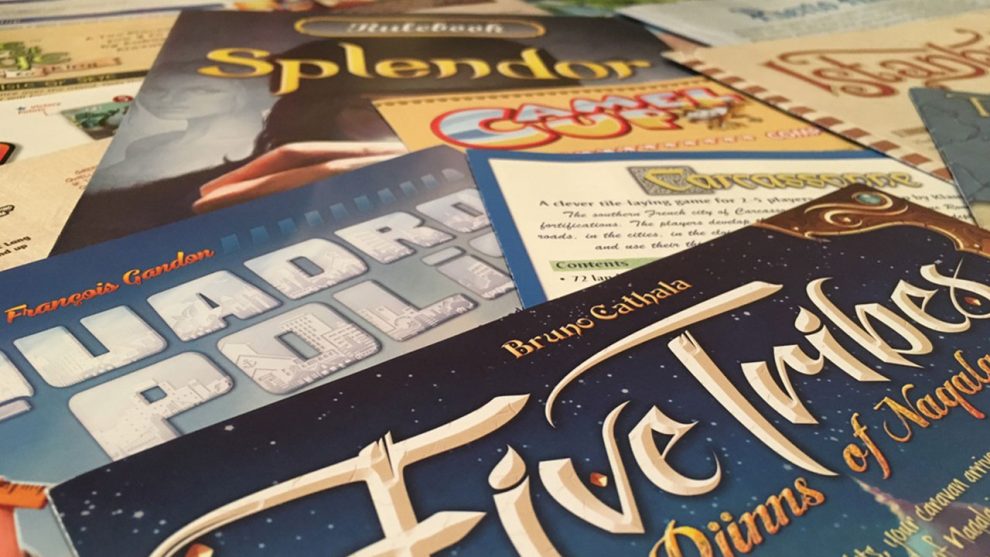We’ve all been there…
We’ve all been there. Someone in your gaming group just bought an awesome new game and everyone is excited to play it. Everyone gathers around the table after catching up and suddenly come to the realization that the game is still sealed in shrink wrap. Cringe The host excitedly breaks the seal, opens the game, and starts reading the rules out loud. Your group sits around the table for the next hour trying to piece together the rules with little to no preparation. After a few hours of dragging through the game, everyone leaves for the night disappointed by the lack of enjoyment they found in the game they were so excited about.
Hopefully this will never happen to you, but chances are eventually it will in some form or another. Many people take for granted the “teaching” step of the gaming process. This step is possibly one of the most important, as the quality of instruction directly impacts the enjoyment of the game for everyone.
Luckily, you do not need to be a professional instructor to facilitate a good learning environment! Throughout this article i’ll break out some of tidbits I’ve picked up over the years that have helped me communicate rules explanations in a clear way that sticks.
Be Prepared!
Hands down the most important thing you need to be doing in order to teach a game well is preparing. Like I mentioned earlier, most gamers have had an experience where they showed up for a game night only to discover that they would be learning the game for the first time along with the host. Generally this kind of experience really puts a damper on the enjoyment of the night for the whole group, as the time investment goes up significantly.
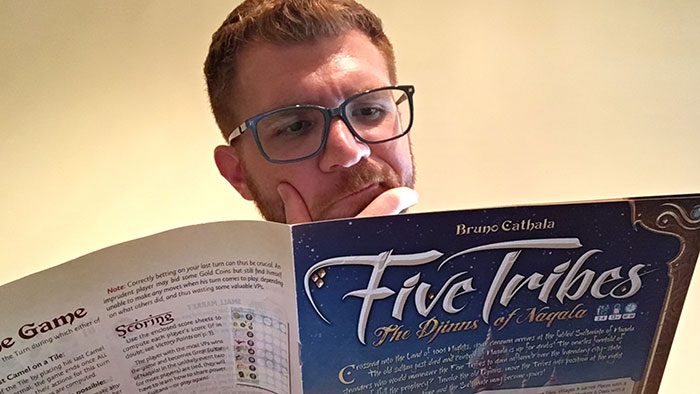
There are some times where this isn’t always true. For example, there are some groups that like to intentionally come together fresh so that they can learn together as an experience. These groups are few and far between, but they have a social contract for their group that works. If it works for your group and is explicitly known, go for it! Otherwise, steer clear.
There are so many different methods of preparing to teach a game, so let’s take a look at a few.
Read the Rulebook
This one is pretty obvious. I probably don’t have to say too much about it, but give the rulebook a good read through once or twice before attempting to teach a game. You don’t have to memorize the rules to the point that you can reference the exact page and paragraph where a rule resides, but you should know and understand enough of the game to confidently explain the main gameplay elements. The rulebook is your number one line of preparation!
Watch an Instructional Video
Instructional videos are a great tool to use when learning the rules to a game for the first time. Not only do they give a great overview of the game in a precise and timely manner, but they are also specifically designed to help you learn the game quickly. These videos can also be used in a pinch to help teach a game directly to your group. There are many great content creators out there, but I think Watch It Played does a phenomenal job teaching games. I would definitely recommend checking them out as they are my go to channel for rules explanations.
Play a Dummy Game With Yourself
This one may sound silly, but it can be one of the most helpful things you can do to really cement a game’s rules in your head. For most people, playing their first game is what allows them to figure the game and it’s mechanisms out, so why would that be different for the teacher?
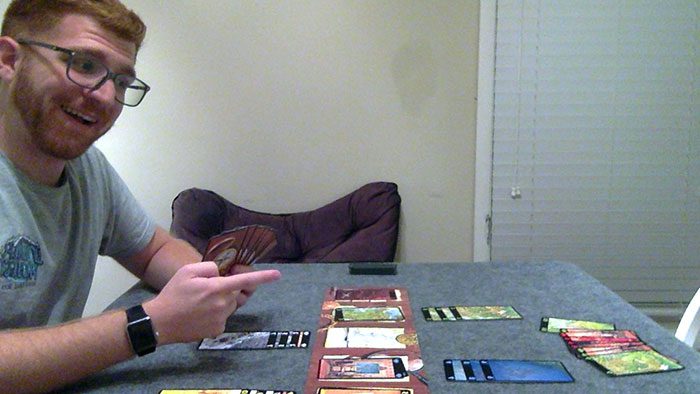
Like I mentioned before, learning a game the first time you play it can be pretty rough, but this is slightly different. Since you are playing against yourself, you are the only person really being affected. Simply playing through some basic turns will really allow you to grasp the way the game plays in a more tangible way. This also allows you to start to see the “why” of different options for yourself instead of from the rules.
There is no one correct way to learn the rules yourself, so try out all methods available and see which one is best for you! I tend to do a little bit of all of them, but I always at least make sure to read through the rulebook.
One thing to point out is that it is OK to have to reference the rulebook when you are teaching a game and playing through it the first time. Few people remember every little rule the first time through, so don’t feel bad about looking things up. In fact, even most designers admit to not remembering all of their rules! As long as you are spending most of the time playing the game, people don’t really mind the occasional rules check.
Use the Theme to Teach
Many people simply overlook the theme and jump right into the mechanics. Sometimes this can work when the theme is so paper thin that it is almost an abstract strategy game, but more often than not it will help enhance your explanation.
Themes are chosen for two reasons: they help the game make a little more sense and they make the game more visually appealing. I generally like to start an explanation off with explaining who we are in the game world and what our motivation is.
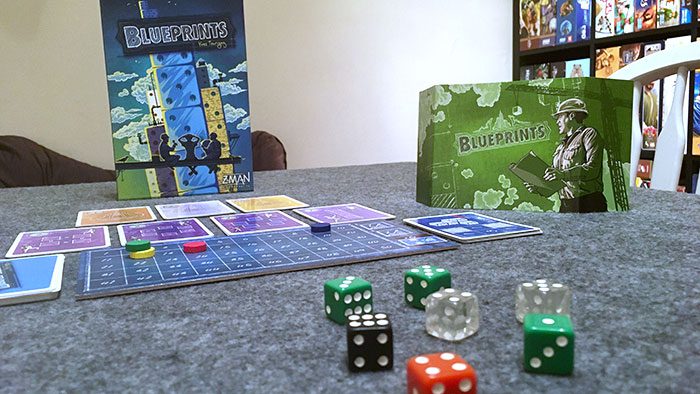
For example, let’s look at Blueprints (see our full review of Blueprints here.) I could say, “In this game we will be stacking up different colored dice to form patterns that win cards. The person with the most points from cards wins.” Sure, that get’s the basic idea across, but it leaves the “why” question stranded. What if instead I said, “Each player is an architect and we are all competing for awards and prizes for our construction projects. These awards and prizes cover everything from building the tallest building to using the most variety in construction materials. Throughout the game we will each choose one material at a time to build our structures and after we have each built three structures, the architect with the most prizes and awards will be given the winning ‘best architect’ prize!”
Some players learn best if they understand why they’re doing what they’re doing. Starting off with the theme can really help the mechanics click for these players once you get into the game. The idea of becoming the best architect by building the coolest structures is much more engaging than winning by getting the most points from stacking dice, isn’t it?
The thing with theme is that every gamer has different feelings towards it. I have met gamers who would almost rather not play a game that did not have a good theme, while i’ve also met gamers who would rather there be no theme at all. Most people land somewhere in the middle. For me, I enjoy a good theme, but would rather have good gameplay. I tend to lean towards more thematically dry games that rely on mechanics than more thematic games that rely more on story. There is no right or wrong, but one thing to keep in mind while teaching is that theme will improve the player’s understanding of the game most of the time.
“Backwards Design”
A good friend that I met in my first consistant board game group taught me one of the most important phrases that i’ve ever heard in regards to rules explanations. Simply, “the goal of the game is to win.” That may seem obvious or a silly thing to say, but it sets the tone for teaching a new game in a few different ways.
In education there is a term called “backwards design” that describes a model used to plan curriculum starting with the goals, then making the tests/assignments, then making the lesson plan. This model also follows through in the teaching method by starting off with the goal and then working out how to get there. Teaching board games should work in almost the same way.
The reason that phrase is so important to me is it clearly sets the end game goal. Sure, winning is the goal in 90% of games, but every now and then it’s not!
Working Backwards
Once you have clearly set up the goal, the first thing that should be mentioned after is “how” to win. Some people like to verbally ask the group, “so how do you win?” followed by a brief explanation. After that, you should move more and more backwards, slowly unpacking the game. This is so important because you can teach an entire game without making the goal clear and everyone will miss out on so much of the “why” they are doing certain things. Why does it matter that you can gain a resource that you can trade in for points? Well, you win by having the most of those points, so it’s pretty important!
It drives me crazy when i’m being taught a game and half way through the explanation I have to stop the teacher and ask the question, “wait, how do we win?” or “what are we working towards?” When you have the end goal in mind it is much easier to understand why every new possibility is important from then on.
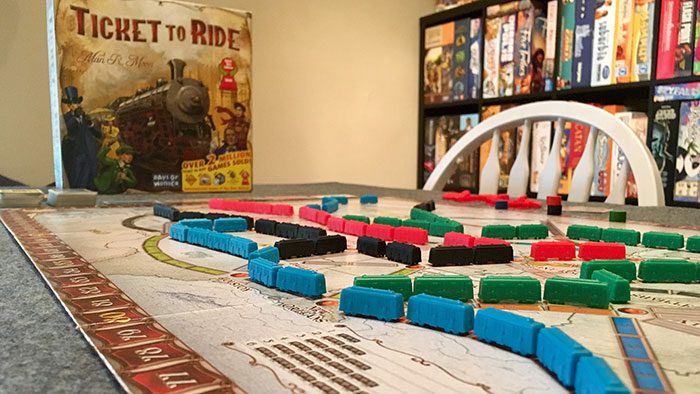
Here’s a basic example for teaching Ticket to Ride:
“The goal of this game is to win. How do you win? Well, you win by having the most points at the end of the game. So how do you get those points? You can get points by placing trains on the board and completing these route cards that you were handed. On your turn you’ll…..”
See, simple, straightforward, and it immediately answers the “why” question. Be careful not to get stuck up on the small details like specific card effects or special scenario rules. Start broad and work your way down to specific. You’ll see that people will start to grasp concepts much quicker when you teach them in this manner because they are constantly looking for the “why” answer to a specific question instead of putting everything together like a puzzle.
I know that this may seem counterintuitive, and I can definitely understand why it seems that way. The problem with not working backwards is that when you are given lots of information without knowing the goal, you will often end up with lots of rules and mechanics that are seemingly disconnected.
For example, If I gave you all of the parts to build a car (pretend that you wouldn’t recognize them) and said, “this one goes here, this one does this, etc.” without telling you why we were putting them together, wouldn’t you be confused? Now, if I started with the goal and said, “We are going to put these pieces together to form a car that will be able to drive forward and backwards.” and then preceded to explain the different parts and how they work together, don’t you think you would have a better understanding?
Playing Practice Rounds
Whenever I’m taught a game, I will usually end up using the phrase “It’ll click once I see it play out” when the host asks, “Does everyone understand? Are you ready to give it a shot?” The reality is that no matter how good of a rules explanation you give, the game won’t fully make sense until you actually start playing it. Don’t get me wrong, without the explanation you couldn’t even get to this point. What I am trying to say is that a large number of people learn by doing instead of hearing. Not everyone is this way, but since board games are a very tactile medium, doesn’t it make sense that people would learn better by actually playing the game out once given some basic information?
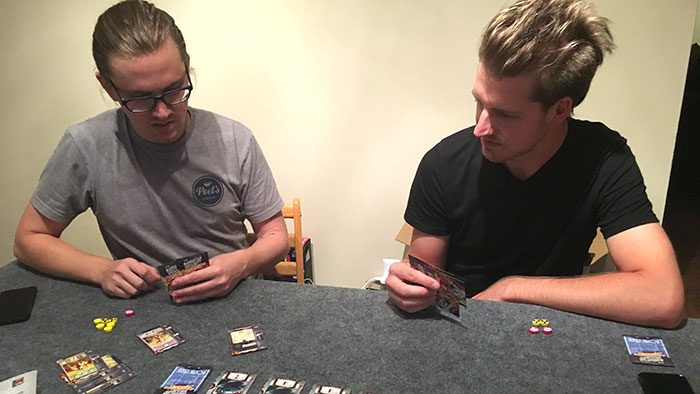
When the opportunity is available, I recommend playing through a “practice round” or two to allow people to feel the game. Start up front by saying that these rounds will not count and are just to help everyone learn the game.
This helps on two fronts.
First, it gives people confidence in making their own decisions. Often when teaching a new game you will encounter players worried that their early decisions are not very good and may impact the game negatively. This is a completely reasonable and normal thought! It is hard to know if you are making a good decision if you don’t really understand its impact yet. The great thing about practice rounds is that it allows players to explore options on their own without worrying about long term implications.
Second, it allows you to teach some basic strategy without other players feeling like you are helping one player over the others. On the flip side of the first point, sometimes when you learn a new game you do make objectively bad moves due to the lack of experience. Again, that is totally a normal part of the learning process! These practice rounds allow the teacher to explain why these moves may not be optimal and also show why alternative choices may be better. Since the real game hasn’t started, the teacher can do this without other players feeling like they are helping too much and also without really impacting the game one way or another.
There are certainly times that practice rounds may not be ideal. If you have a specific time frame or the game is not easily “reset,” then it may be best to avoid them. Still, more often than not this will not be the case and it will make a drastic difference in the player’s understanding of the game.
The Goal of the Game is to Have Fun
Remember when I said that the goal of the game was to win? Well, I lied. Ultimately the goal of the game is to have fun. Whether you are storming castles, becoming the best architect, or reliving a famous war battle, all the time that you spent teaching the game and its rules will be wasted if the group doesn’t have any fun.
As the teacher of the rules, you have a heavy weight on your shoulders! Sure, with the right group of people, even a poor rules explanation can be turned around and end up being a great experience. Still, remember that your job will often set the mood for the rest of the evening. A positive and prepared teacher will lead to an enthusiastic and attentive group of players while a boring and unprepared teacher will lead to a frustrated and confused group.
I may make that sound dramatic, but it’s really pretty simple. If you come prepared and have fun with it, things will go fine! Remember, that no one is perfect at this and it takes some time and practice to really get it down. It’s ok to struggle through an explanation as long as you learn from what went wrong and try to not let it happen again.
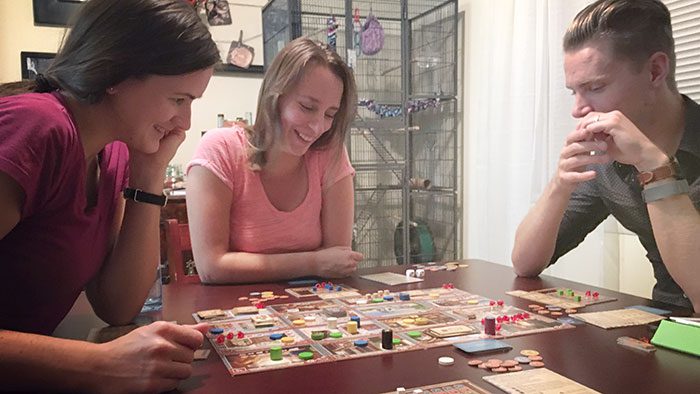
Since what you do directly impacts the enjoyment of the game for others, why not try to make it as enjoyable as possible? Don’t take things too seriously and make sure to still have fun!
One thing that I commonly see negatively impacting a learning game is when players make mistakes or miss rules. For many of us gamers the initial response is “you should have payed attention!” While that may be fair for more experienced players, I think that being too strict on rules can really push someone away from a game that they would have otherwise enjoyed.
If I have a new player who makes a wrong move or misses something, I will usually encourage that person to take it back or gain the thing that they forgot. As an instructor, you have to read the situation for this one to make sure it is actually helpful, though. It multiple turns have passed and the mistake would negatively impact other players, you may want to encourage the player to learn from the mistake. If it does not impact the other players at all though, go ahead and let them fix their mistake! Wouldn’t you rather have a player that enjoyed their experience than have a “perfect” game?
For me, I have implemented this philosophy into most of my games now. Over time I have realized that making sure everyone has fun is much more important than winning a game. I would much rather a player grab his token that he missed for the turn than have the player feel dumb for missing it. Sure, there is a line that can be crossed, but you will find that for yourself and your group over time.
Conclusion
There are plenty of other methods and ideas that would probably make the teaching aspect easier, but I think these are among the most important. As long as you are prepared, teach backwards, and have fun your night will be a success! Give these a try, but don’t be afraid to fail! Some may naturally be a good teacher, but for most, teaching is a skill you will learn with experience. The only way to get experience is to try!
What are some other tips that you have found helpful in teaching new games? Continue the conversation down below in the comments!


